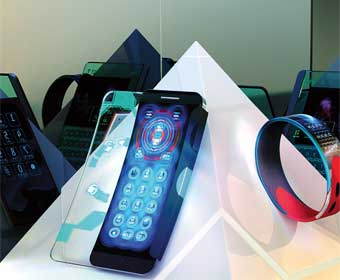Consumers have shown that they are willing to pay a premium for a smartphone if the device is good enough. But they have not been enticed by low-cost smartphones, as it seems that many consumers in developed markets view their smartphone as both a crucial part of their lives and a status symbol. And at the end of the day, if they’re stuck with a phone for a 24-month contract, they want a good one.
June 29, 2012

Consumers have shown that they are willing to pay a premium for a smartphone if the device is good enough. But they have not been enticed by low-cost smartphones, as it seems that many consumers in developed markets view their smartphone as both a crucial part of their lives and a status symbol. And at the end of the day, if they’re stuck with a phone for a 24-month contract, they want a good one.
However, how many ultra low-cost smartphones have even been offered, and marketed well, in developed markets? And how many operators have experimented with tariffs to put together low-cost handsets on shorter term deals?
It seems to me that any player that will disrupt the market can only do so by employing a price penetration strategy – as Telefónica’s Simon Lee-Smith told Telecoms.com last year, no-one will pay a premium for a phone that has no differentiation. So if you can’t beat them, try lowering your prices.
The thing is, operators don’t need Nokia, Sony or RIM to come in and save the day – the key ingredients to build a smartphone are already there.
In Intel, there’s a chipmaker desperate to get into the mobile handset space. A cheaper option could be Broadcom, which Vodafone has relied on to put together a £70 smartphone. Then there are chassis specialists – the likes of HTC, Huawei, Asus and ZTE have all got a lot of experience in putting together white-labelled handsets, while Chinese firm Gigabyte built Orange’s San Diego handset. So there is plenty of scope to put together a powerful device that doesn’t cost the Earth.
And then there’s software.
For years in the PC space, free software has proven to be immensely popular through the rise of free or “freemium” open source models. Consumers have happily relied on services such as Open Office, which is free and not too dissimilar to Microsoft’s Office software, the rise to prominence of Mozilla’s Firefox unexpectedly created an environment whereby consumers actually feel they have a choice of which browser they can use, while Java is an application framework that has underpinned a huge proportion of the content on the internet today. Even Google is now testing the might of Microsoft’s Windows OS for the mass market, with its open source Chrome OS.
In the mobile handset space, similar offerings are beginning to appear. Mozilla is now working with operators on the B2G project – which aims to develop an open source mobile operating system for low-cost smartphones. Then there’s the Intel-backed Tizen, which Samsung is merging its own Bada operating system with for its low-end devices – and these options are bound to have captured the intrigue of operators.
For my money, one reason that Nokia has struggled with its Lumia range because the apps available to download for the handsets just do not stack up against iPhone and Android apps, in terms of quality or quantity. If the B2G scheme gains support of numerous operators and hardware manufacturers, there’s an opportunity for Mozilla to put together an app offering that can rival what Android and Apple offer.
Putting out smartphones that do more or less what an iPhone does but at a fraction of the cost could well prove to be a popular idea, although an obvious stumbling block is how many consumers want to show their friends their new Vodafone phone, or their new T-Mobile phone, rather than an SIII or iPhone?
The marketing challenge is a huge one, but maybe operators should look to capitalise on the reputation that the open source model has built over the years.
It took time for consumers to take to open source products, but now, they are hugely popular. Brand names such as Linux, Mozilla and Android, are recognised for providing quality despite their low-costs. Yes, open source etiquette dictates that those who make developments with open source software contribute their technology back to the open source community, but it’s a small price to pay for operators to free themselves to any extent from the power wielded by the likes of Apple and Samsung.
Operators need to stop kidding themselves by thinking consumers want an operator-branded smartphone – it’s just not in vogue. Mozilla-branded handsets though, could catch on a lot better.
Read more about:
DiscussionAbout the Author(s)
You May Also Like








.png?width=300&auto=webp&quality=80&disable=upscale)


_1.jpg?width=300&auto=webp&quality=80&disable=upscale)


.png?width=800&auto=webp&quality=80&disable=upscale)